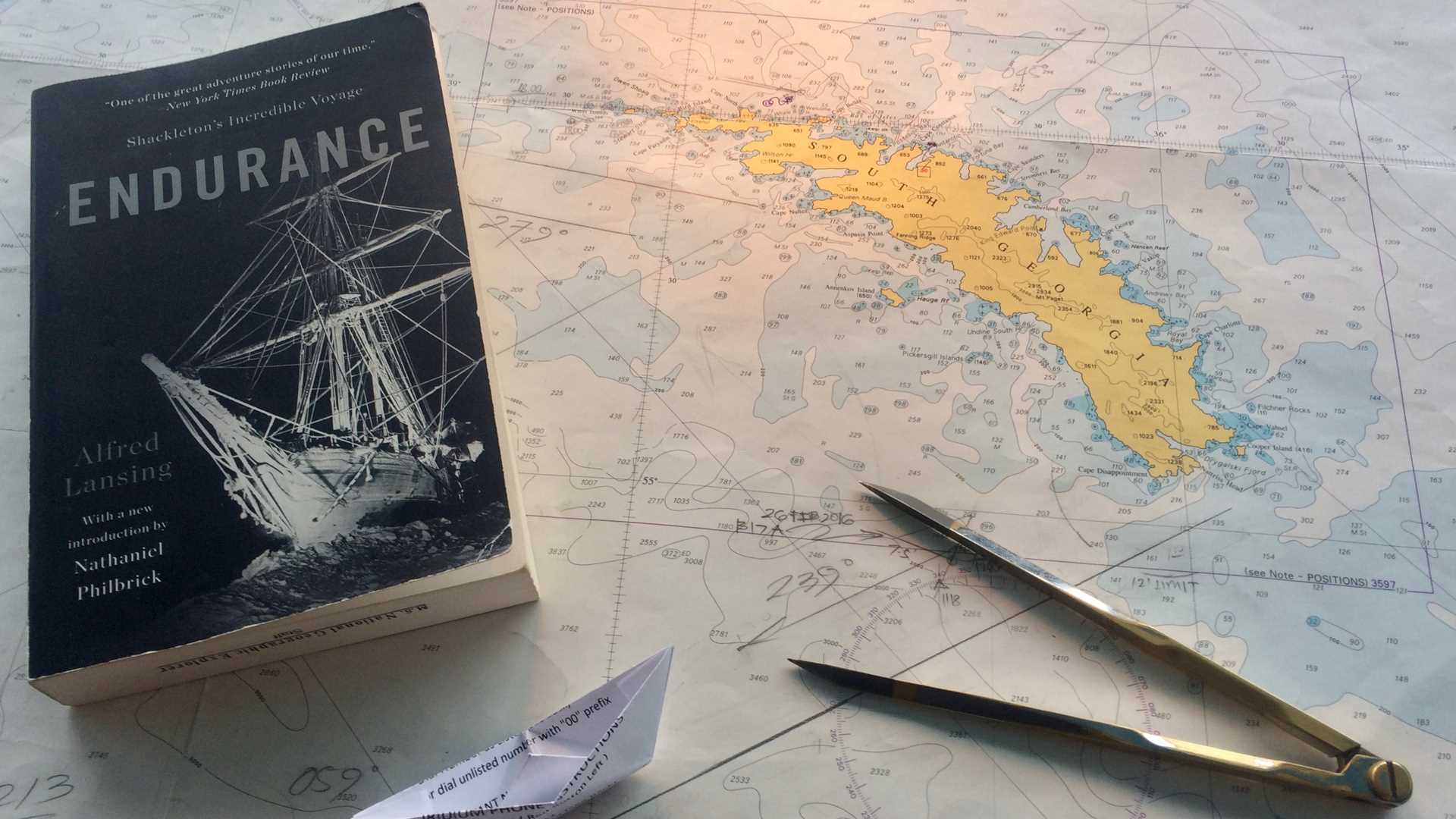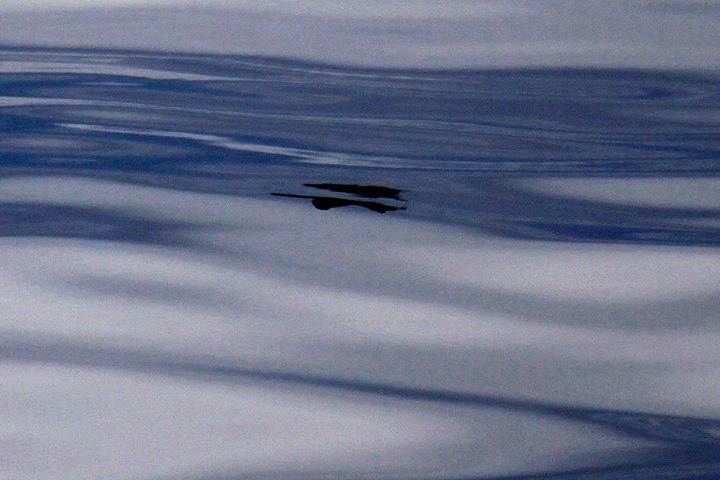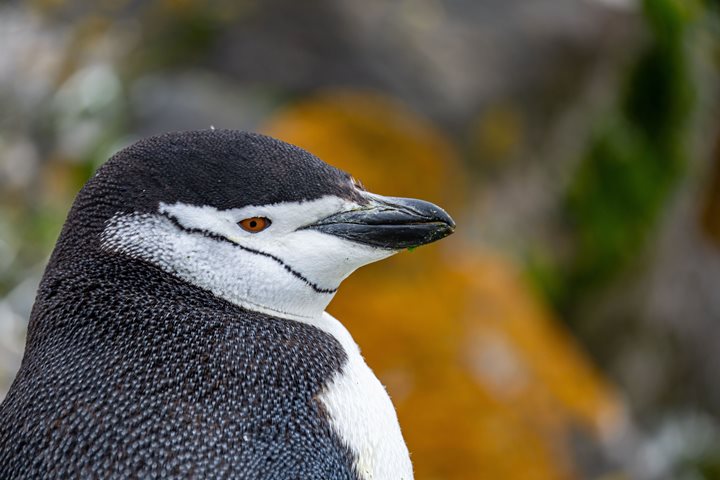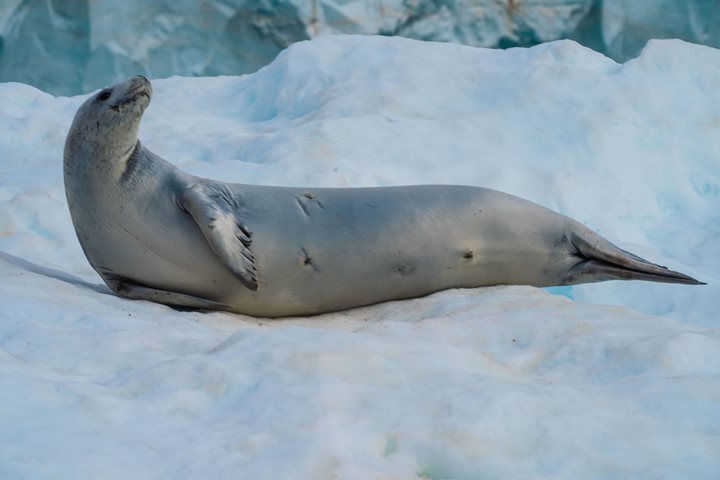Today we continued our crossing of a vast swathe of the Southern Ocean on board the National Geographic Explorer. We sailed from the rugged and weather-beaten island of Elephant Island in the South Shetland Island chain–the very island where Sir Ernest Shackleton left 22 of his men in the comparative safety of Point Wild, while he and five other men took to sea in hope of finding rescue. Shackleton’s aim was to sail to South Georgia, which is a forbidding distance of 1300km (800 miles) from Elephant Island. What’s more, South Georgia is located in the heart of one of the most treacherous bodies of water in the world. This was one gallant endeavour on behalf of every man involved.
Continuing our crossing of 1300km of the Scotia Sea, as Shackleton, Crean, Worsley, Vincent, McCarthy and McNeish did over 100 years ago, we began to appreciate how incredible the enormous feat these men achieved was. The National Geographic Explorer is a sturdy expedition vessel, but today it was moving enough for us to ‘always keep one hand for the ship’ and for a few of us to feel somewhat uncomfortable. But if the motion of the ship became too much we could take to our cabins and listen to today’s informative lecture program from the comfort of our suites. If we chose to step outside onto deck for some fresh air we were met with a biting breeze and a spray of seawater whipped up from the waves. Enough to hurry us back inside for a warming cappuccino from our lovely bartenders. The navigation is achieved by the expert knowledge of our Bridge team plus their technical equipment. So how can we even begin to understand the hardship these six men faced as they crossed this very sea on the 6.9m (23ft) James Caird with Worsley having but four sun sightings from which to navigate?
We can’t. We can read, listen and watch accounts of the expedition. Today we could stare out at the sea Worsley so expertly navigated across. We are learning, seeing and experiencing more as our voyage continues. We are realizing it was a combined feat of human endurance, teamwork and remarkable expertise that brought these men to safety. Looking out at the Scotia Sea, as the grey looming sky and white-capped waves rolled ominously around us, we could only marvel at what these six resilient men endured in this merciless sea.
It took Shackleton, Crean, Worsley, Vincent, McCarthy and McNeish 14 days to sail from Elephant Island to South Georgia. Spending 14 days at sea in the Southern Ocean is a daunting prospect for any sailor. What’s more, their expedition of endurance was not over when they reached the shores of South Georgia. We will learn more about the crossing of South Georgia on foot by Shackleton, Crean and Worsley as our expedition continues. If Captain Cook’s description of South Georgia back in 1777 is anything to go by, we know we are arriving at a location that surely ranks as one of the most untamed corners of the natural world:
“the Wild rocks raised their lofty summits till they were lost in the Clouds and the Vallies laid buried in everlasting Snow. Not a tree or a shrub was to be seen, no not even big enough to make a tooth-pick”
Captain Cook, 1777 (Taken from South Georgia, Robert Burton)
Our level of comfort and warmth as we approach South Georgia is something Shackleton and his men would never believe possible to exist. We are journeying here to explore a unique outpost of the natural world, to admire its sheer glaciated landscape and its bountiful wildlife–including over 30 million breeding birds. We are also here to appreciate a vast story of human endurance.
Indeed it is a story so vast that with every passing day and sight we see, we hope to be able to appreciate another mere fraction of what Shackleton, Crean, Worsley, Vincent, McCarthy and McNeish experienced a little over 100 years ago.







